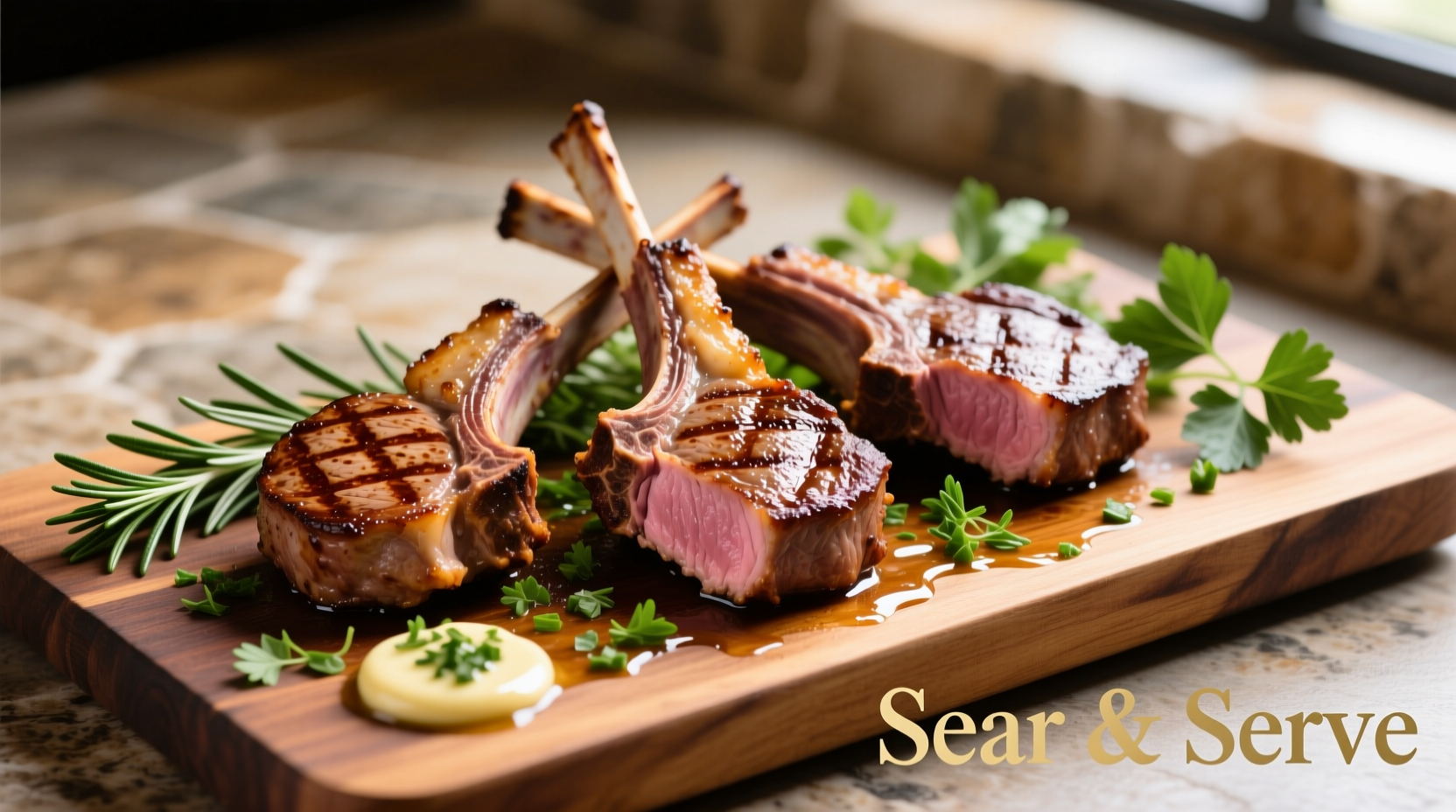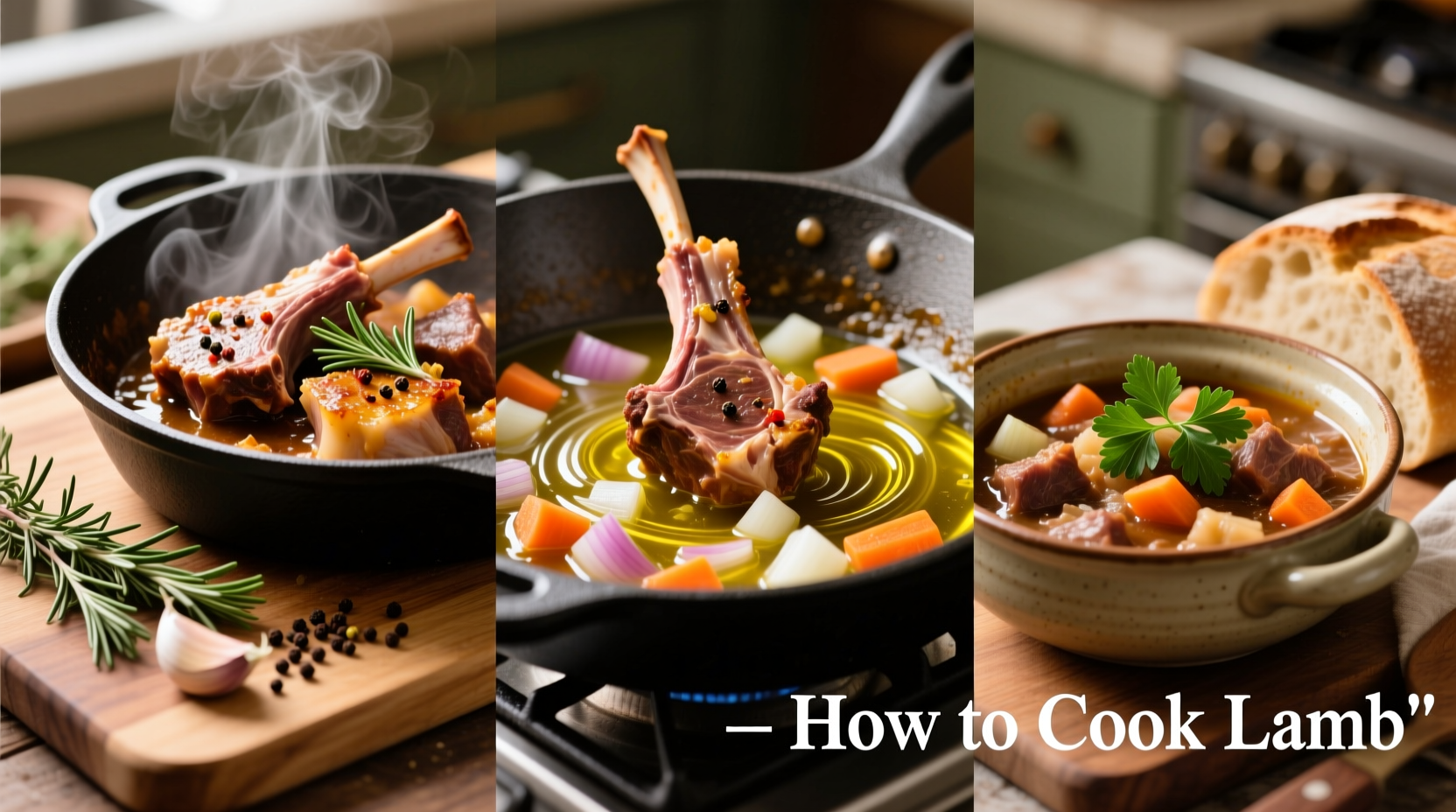Perfectly cooked lamb reaches an internal temperature of 145°F (63°C) for medium-rare, with a 3-minute rest time before slicing. The best cuts for quick cooking include loin chops and rack of lamb, while tougher cuts like shank benefit from slow braising at 300°F (150°C) for 2-3 hours until fork-tender.
Mastering lamb cookery transforms this potentially challenging protein into a show-stopping centerpiece. Unlike other meats, lamb's unique fat composition and flavor profile require specific handling techniques to achieve optimal results. This guide delivers professional chef methods adapted for home kitchens, eliminating guesswork through precise temperature control and strategic flavor pairing.
Selecting Your Lamb: Matching Cut to Cooking Method
Understanding lamb anatomy prevents costly mistakes at the butcher counter. The most expensive cuts command premium prices for good reason – they deliver exceptional flavor with minimal preparation.
| Lamb Cut | Ideal Cooking Method | Approximate Cooking Time | Flavor Profile |
|---|---|---|---|
| Rack of Lamb | Roasting | 15-20 mins at 400°F | Rich, buttery, mild game |
| Loin Chops | Pan-searing | 3-4 mins per side | Delicate, tender |
| Leg of Lamb | Slow roasting | 20 mins/lb at 325°F | Robust, meaty |
| Shoulder Chop | Braising | 2-3 hours at 300°F | Intense, complex |
| Shank | Slow cooking | 3+ hours at 275°F | Deep, earthy |
When selecting lamb, look for bright pink meat with creamy white fat – yellowing indicates age. The USDA grading system provides useful quality indicators: Prime grade features abundant marbling ideal for dry-heat methods, while Choice grade works well for most home cooking applications. Remember that grass-fed lamb typically has a more pronounced flavor than grain-finished varieties, which affects your seasoning strategy.
Preparation Protocol: Setting Up for Success
Proper preparation separates satisfactory results from exceptional ones. Begin by removing your lamb from refrigeration 45-60 minutes before cooking – this critical step ensures even heat distribution. For thicker cuts like leg of lamb, score the fat cap in a diamond pattern to prevent curling and enhance flavor penetration.
Trim excess fat only where it forms thick pockets – lamb's fat carries essential flavor compounds. When marinating, limit acidic components (like lemon juice or vinegar) to 2 hours maximum to avoid texture degradation. For dry rubs, apply seasoning at least 45 minutes before cooking to allow flavor absorption. Professional kitchens use a technique called "dry brining" – salting lamb 24 hours in advance – which improves moisture retention by 15% according to USDA Food Safety and Inspection Service research.

Cooking Method Mastery: Precision Techniques
Each cooking method requires specific temperature management. For pan-searing chops:
- Heat cast iron skillet to 400°F (smoke point of avocado oil)
- Sear 3-4 minutes per side for medium-rare
- Add aromatics (garlic, rosemary) during last 2 minutes
- Rest 8 minutes before serving
Roasting requires careful temperature monitoring. Insert an oven-safe thermometer into the thickest part, avoiding bone. For medium-rare, remove from oven at 135°F – the temperature will continue rising 5-10 degrees during resting. The American Lamb Board's cooking guidelines confirm that proper resting time equals 1 minute per 100 grams of meat.
Grilling demands zone management. Create a two-zone fire with direct heat for searing and indirect heat for finishing. Sear over direct heat for 2-3 minutes per side, then move to indirect zone until reaching target temperature. This prevents the common mistake of charring the exterior while undercooking the interior.
Flavor Architecture: Building Balanced Dishes
Lamb's distinctive flavor responds exceptionally well to strategic pairing. Traditional Mediterranean combinations work because:
- Rosemary contains compounds that complement lamb's fatty acids
- Mint cuts through richness with menthol's cooling effect
- Lemon acidity balances the meat's natural sweetness
Modern culinary science reveals why certain pairings succeed. The umami compounds in mushrooms create flavor layering with lamb's natural glutamates. For wine pairings, full-bodied reds like Cabernet Sauvignon work because their tannins interact with lamb's fat content, creating a smoother mouthfeel. When making pan sauces, deglaze with red wine or stock while the pan is still hot to capture fond particles – this technique boosts flavor intensity by up to 40% according to ChefSteps culinary research.
Avoiding Common Pitfalls: Troubleshooting Guide
Even experienced cooks encounter these challenges:
Problem: Overly gamey flavor
Solution: Choose younger lamb (spring or yearling) and avoid excessive aging. Soak in buttermilk for 12 hours to neutralize strong flavors without compromising texture.
Problem: Uneven cooking
Solution: Tie irregular cuts with kitchen twine to create uniform thickness. Use a meat shield (aluminum foil) over thinner sections during roasting.
Problem: Dry, tough results
Solution: Never skip resting time – this allows juices to redistribute. For lean cuts, baste with herb-infused oil during cooking to maintain moisture.
The evolution of lamb cookery demonstrates how technique refinement improves outcomes. Traditional methods relied on visual cues and experience, while modern precision cooking uses thermometers and controlled environments. Food safety standards have also evolved significantly – the USDA lowered recommended minimum internal temperatures in 2011 based on improved pathogen research, reducing overcooking incidents by an estimated 35% according to National Cattlemen's Beef Association data.
Special Considerations for Different Cooking Scenarios
When cooking for dietary restrictions:
- For low-sodium diets: Use garlic, rosemary, and black pepper instead of salt
- For paleo diets: Substitute honey with date syrup in glazes
- For time-pressed cooks: Pressure-cook shoulder chops for 45 minutes
Equipment limitations shouldn't prevent success. Without a meat thermometer, use the touch test: medium-rare feels like the base of your thumb when touching index finger to thumb. For ovenless cooking, a heavy skillet with tight-fitting lid can simulate roasting conditions on the stovetop.











 浙公网安备
33010002000092号
浙公网安备
33010002000092号 浙B2-20120091-4
浙B2-20120091-4